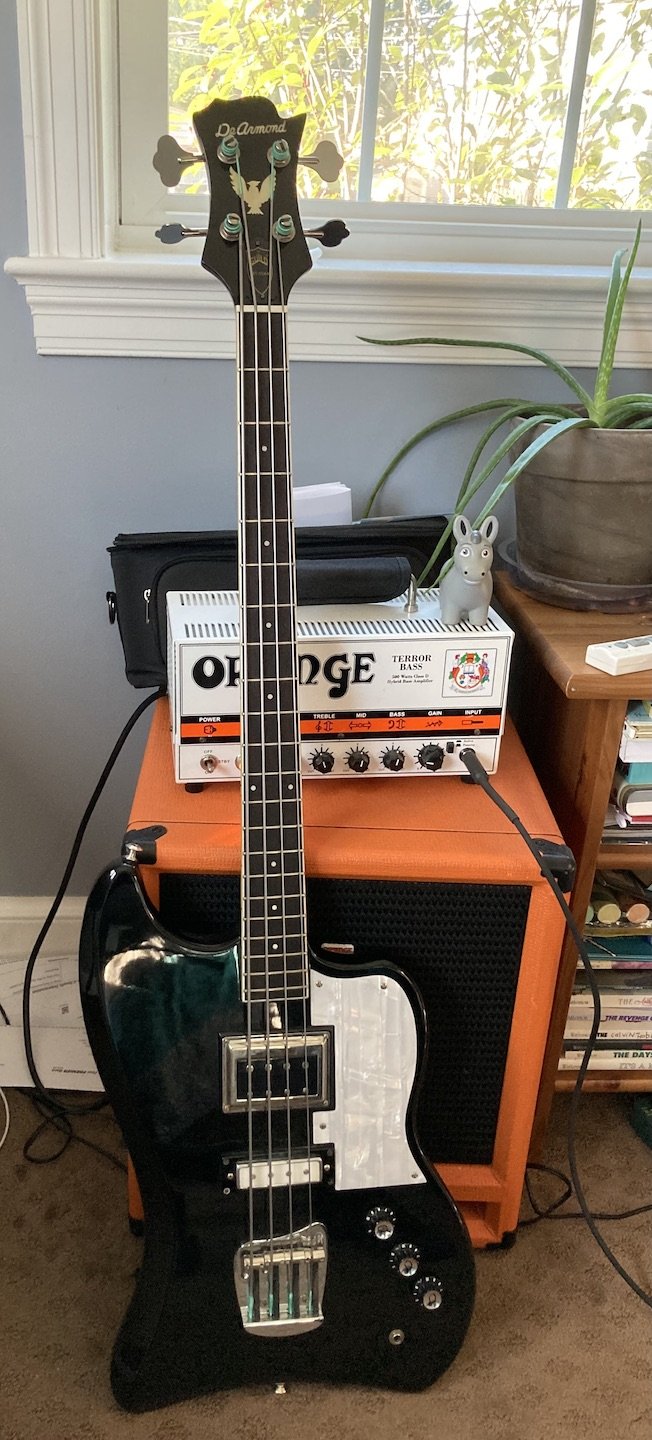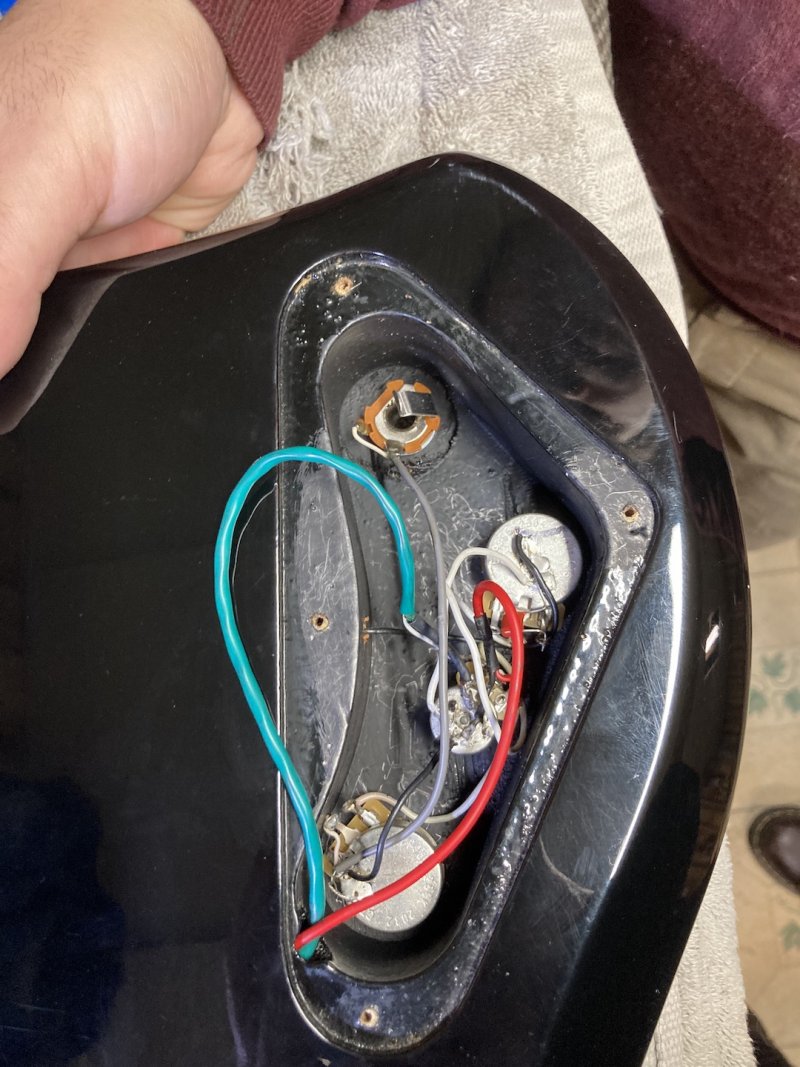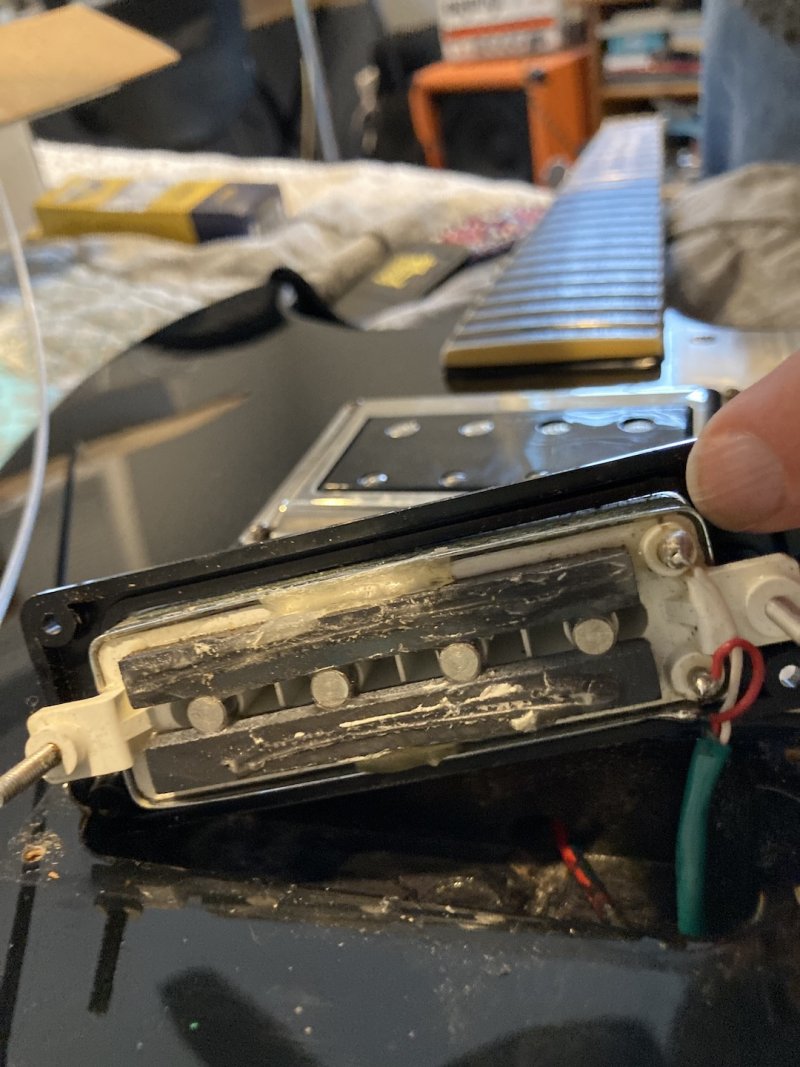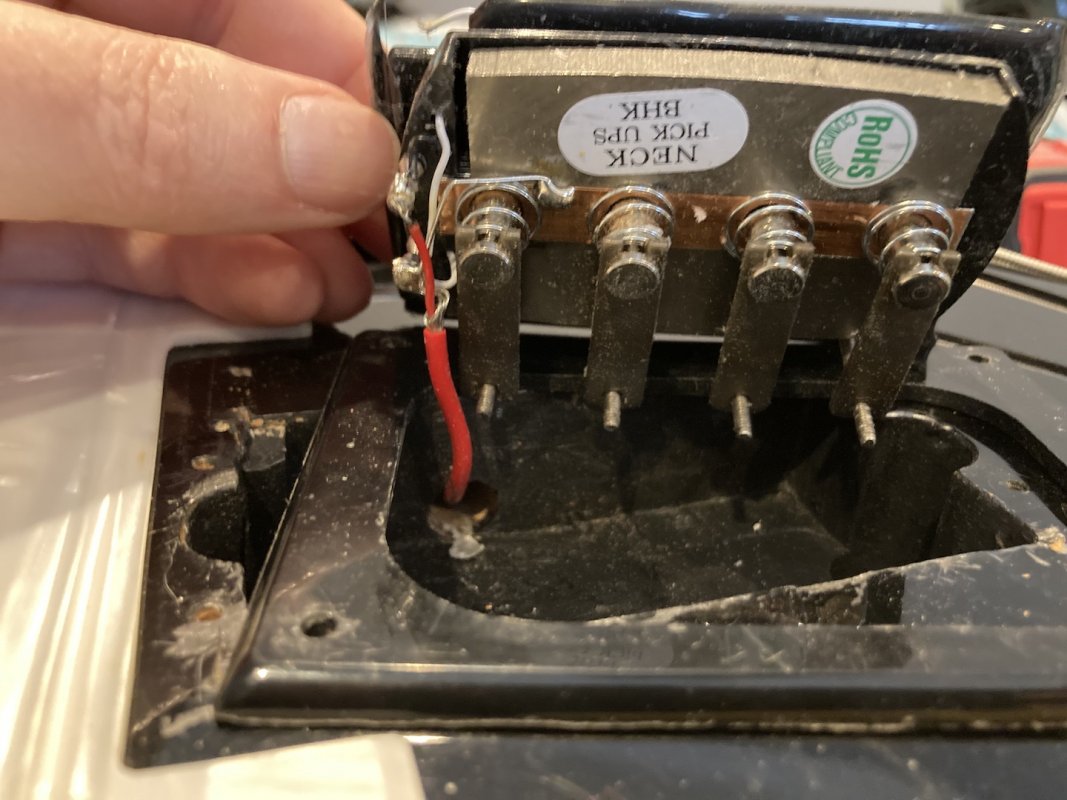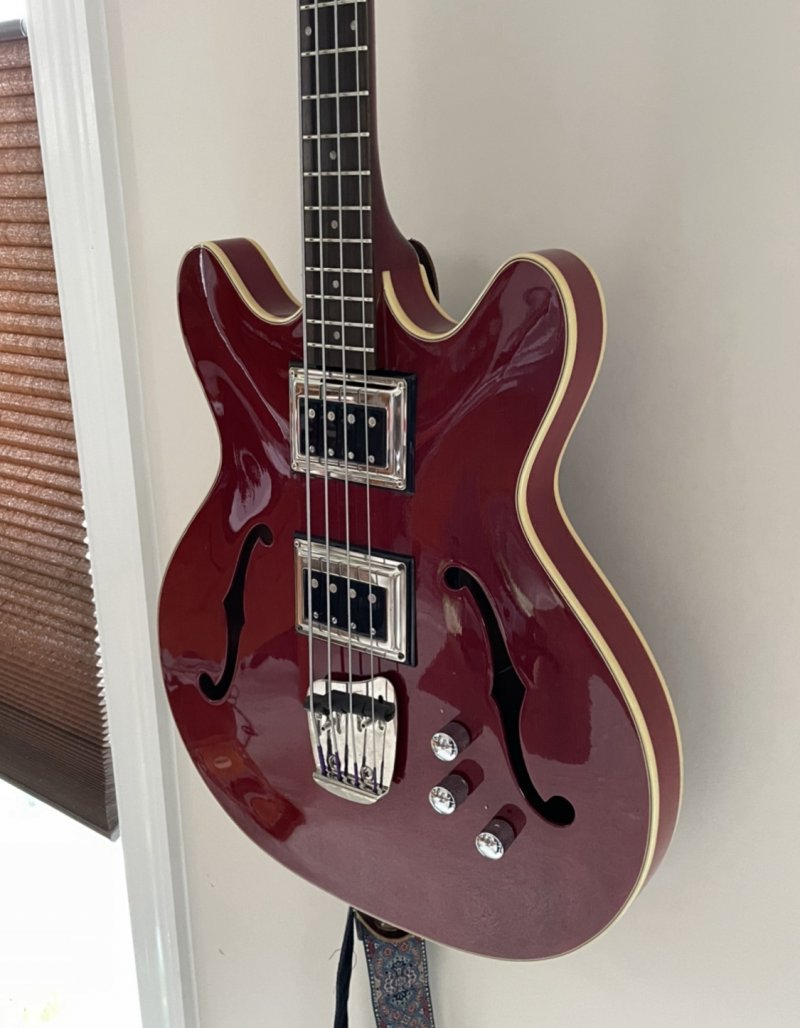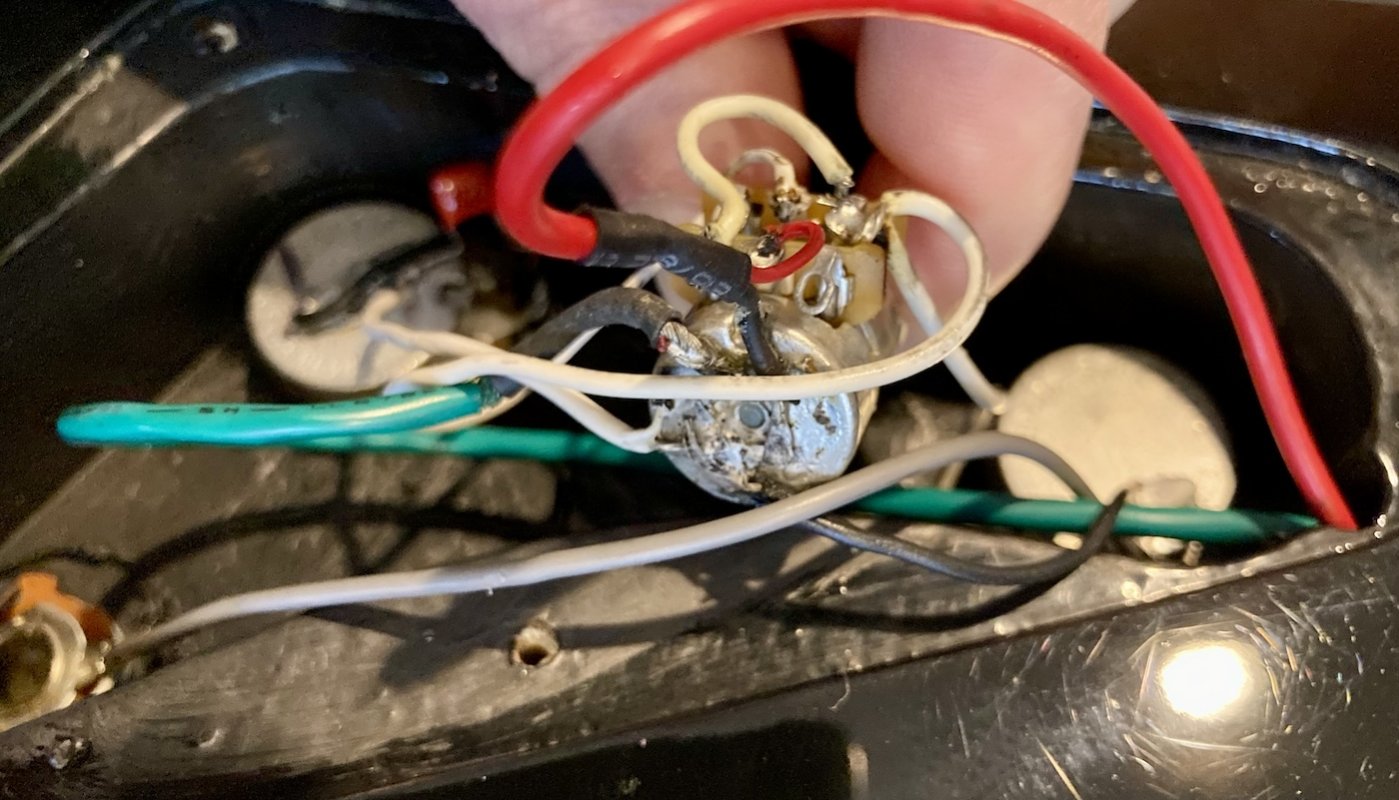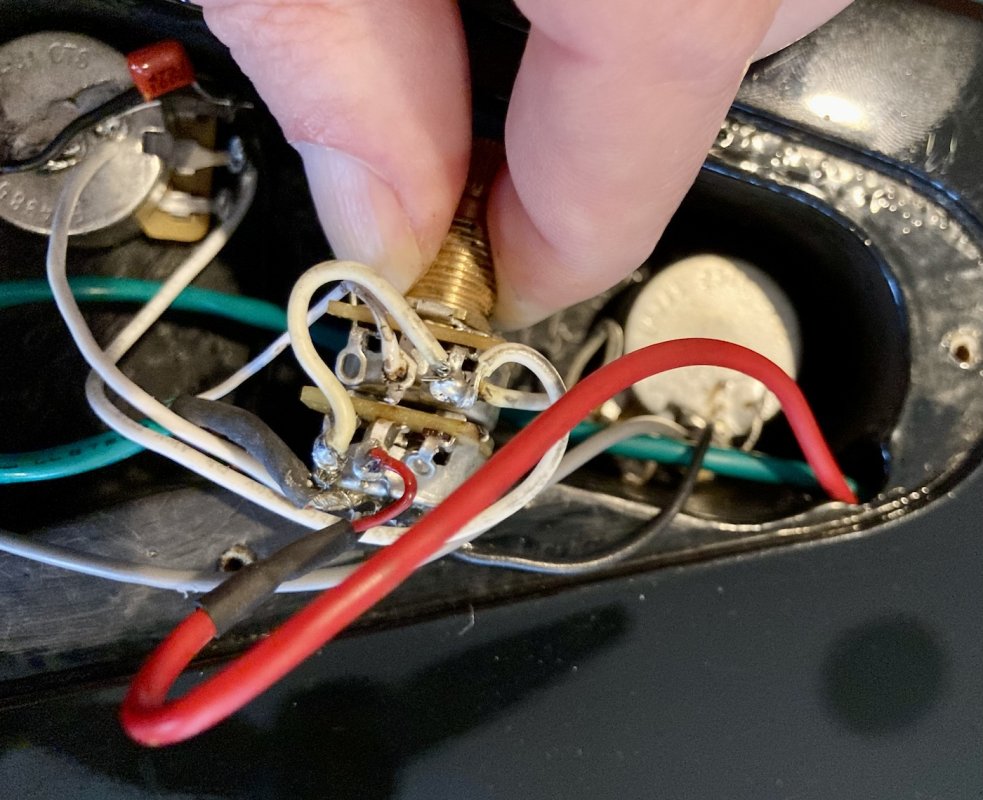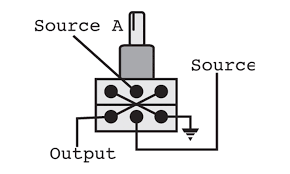Hi all!
Newbie here, although I'm a Guild enthusiast (2017 SF V, 2019 F40 Jumbo).
I bought this 90s JS bass in November, and would like to get some help figuring out some of the problematic wiring, and how the pots are currently working. As-is, I actually really the current tone. I mostly play indie rock, lots of pedals, etc., and the tone is dark and grindy in a pleasant way with the current flats. The controls seem odd to me, but I'm new to the JS and learning my way around them.
At present, the neck pot seems to control the bisonic pickup (or, just volume in general for whichever pickup) just fine. The middle pot is detented, and I can't tell if this is a blend, or if it is instead a tone pot. It only seems to work if it's cranked all the way dimed, otherwise it's shorted, and as I dial it back, I lose sound altogether. I assumed this was a tone pot based on the photos of the control cavity, but not sure now. And finally, I assumed the pot nearest the output jack was a volume pot, but when the middle pot is in that dimed position, this pot seems to be the tone pot.
After taking this to my tech for setup, he identified that the previous owner attempted to run the ground wire to the pickup ring on the BS, but it was detached. Also, he recommended I basically rewire this thing based on its current state, labeled a "hot mess". If I do so, I had assumed I'd gut it, shield the cavities, and go with e.g. a StewMac Jazz Bass wiring kit with 250K CTS pots and .047 capacitor, as the current pots are 250K CTS (and I like the tone for what is being output at present). But I also see that 500K for BS seem to be recommended frequently on here. What would be the good approach here?
Can anyone help provide any info on the bridge pickup? I assume it's stock from the Korean build, but I see similar JS pickups currently on Reverb that are USA-made. At first I thought this was a Dynasonic, but now not sure. Is this P90-like?
Also, would welcome any advice on cool upgrades for this one (the stickers on the back of this BS pickup seem to indicate a Korean BS pickup, but I'm potentially game to go Novak BS-DS on this one). I'd welcome replacement/upgrade ideas for the stock bridge pickup too, and I may be willling to just put an additional BS in it.
Finally, I'm really loving the flatwound strings that came on this bass, but have no idea what they are. They seem to have a baby blue/seafoam green wrap on them. Any ideas?
Thanks!
Cass
Newbie here, although I'm a Guild enthusiast (2017 SF V, 2019 F40 Jumbo).
I bought this 90s JS bass in November, and would like to get some help figuring out some of the problematic wiring, and how the pots are currently working. As-is, I actually really the current tone. I mostly play indie rock, lots of pedals, etc., and the tone is dark and grindy in a pleasant way with the current flats. The controls seem odd to me, but I'm new to the JS and learning my way around them.
At present, the neck pot seems to control the bisonic pickup (or, just volume in general for whichever pickup) just fine. The middle pot is detented, and I can't tell if this is a blend, or if it is instead a tone pot. It only seems to work if it's cranked all the way dimed, otherwise it's shorted, and as I dial it back, I lose sound altogether. I assumed this was a tone pot based on the photos of the control cavity, but not sure now. And finally, I assumed the pot nearest the output jack was a volume pot, but when the middle pot is in that dimed position, this pot seems to be the tone pot.
After taking this to my tech for setup, he identified that the previous owner attempted to run the ground wire to the pickup ring on the BS, but it was detached. Also, he recommended I basically rewire this thing based on its current state, labeled a "hot mess". If I do so, I had assumed I'd gut it, shield the cavities, and go with e.g. a StewMac Jazz Bass wiring kit with 250K CTS pots and .047 capacitor, as the current pots are 250K CTS (and I like the tone for what is being output at present). But I also see that 500K for BS seem to be recommended frequently on here. What would be the good approach here?
Can anyone help provide any info on the bridge pickup? I assume it's stock from the Korean build, but I see similar JS pickups currently on Reverb that are USA-made. At first I thought this was a Dynasonic, but now not sure. Is this P90-like?
Also, would welcome any advice on cool upgrades for this one (the stickers on the back of this BS pickup seem to indicate a Korean BS pickup, but I'm potentially game to go Novak BS-DS on this one). I'd welcome replacement/upgrade ideas for the stock bridge pickup too, and I may be willling to just put an additional BS in it.
Finally, I'm really loving the flatwound strings that came on this bass, but have no idea what they are. They seem to have a baby blue/seafoam green wrap on them. Any ideas?
Thanks!
Cass
